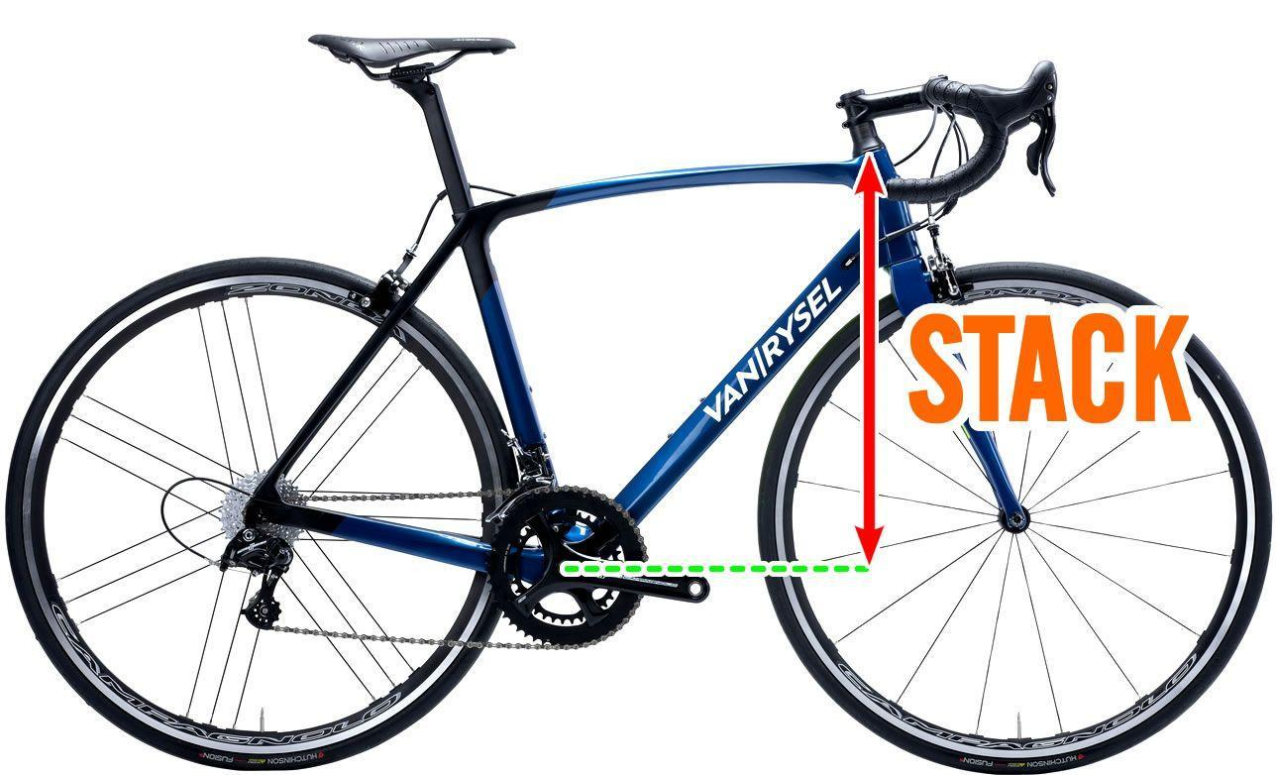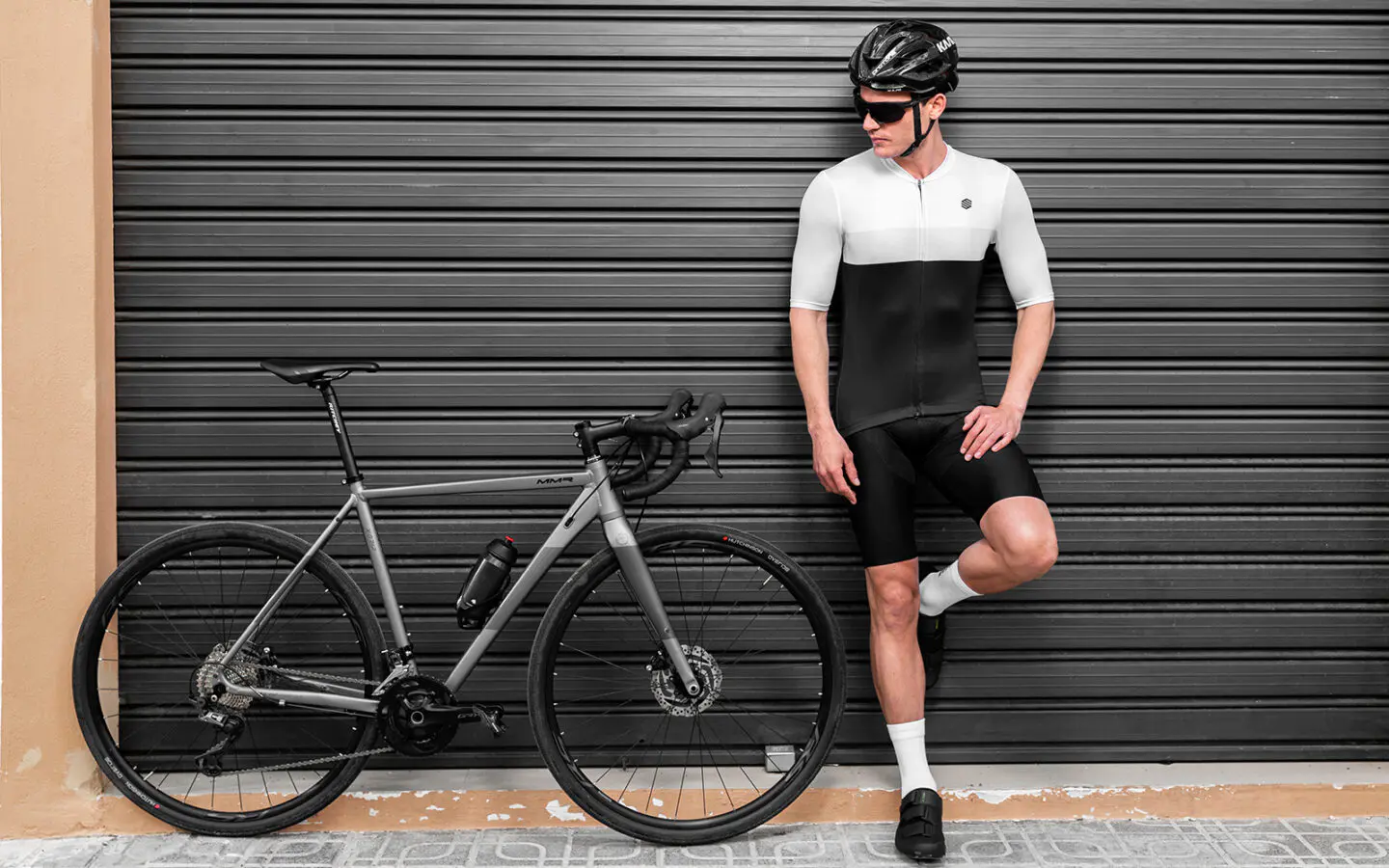Geometry is not exactly what first comes to mind when choosing a bike, but that’s one of the key aspects we need to pay attention to, given that it affects its responsiveness, comfort and handling. The angle of the head tube, the length of the top tube, the height of the bottom bracket, the reach and stack… All of these concepts have an impact on how the body weight is distributed, how the bike responds on curves, how well it keeps its balance while going at fast speed, as well as how comfortable and smooth it is to ride. Let’s take a look at all of them in greater detail:
Head Tube Angle

Measures the slant on the head tube, the one that connects the handlebars to the fork. The wider this angle is, the faster and lighter the bike will be at the front, but also more unstable and uncomfortable to ride. A wider angle is perfect to ride on technical terrains and in competitions. By contrast, the narrower the angle is, the more comfortable and stable the bike will be, but not as nimble and reactive. A narrow angle is ideal for a much more relaxed type of cycling.
Road bikes usually have an angle of around 70-73º in order to allow the cyclist to blend in with the handlebars, speed up easily and climb smoothly. On the other hand, downhill bikes have angles around 63º in order to guarantee stability during descents and technical trails, so as to avoid falling over the handlebars.
Head tube length

The length of the aforementioned head tube will greatly affect the measurements for the stack, which we will be mentioning later. A longer head tube will result in higher handlebars, and consequently, a more relaxed posture on the bike. This is a quite prominent feature in endurance road bikes. However, time trial bikes have considerably smaller tubes in order to improve aerodynamics.
The length of the head tube cannot be reduced, but it can be increased by adding spacers in the fork tube. This is advised against, but can be done if the tube hasn’t been previously cut down.
Trail and fork offset

The measurements on these two areas have correlation:
The trail is the distance between the steering axis and the point where the front wheel touches the ground. This distance is defined by the angle of the head tube and its length.
The fork offset is the distance between the center of the front wheel and the steering axis. It can be used to either reduce or increase the trail distance without having to make any modifications to the angle of the steering axis. It can also be used to adjust the distance of the wheelbase (distance between both wheel axles). An increased offset means a reduced trail, and the other way around.
Both of these measurements affect the bike’s response as well as its handling. A wider trail implies a more stable bike at high speed, but less easy to maneuver when riding slower. In contrast, a smaller trail distance implies a more agile bike and easy to maneuver at the front, but can also make it more unstable at higher speed.
Top tube length

This length is delimited by the distance between the head tube and the seat tube. There are two different ways to conceive this distance: one is the actual top tube, which refers to the length of the top tube itself, and then what is known as the effective top tube length, which is the horizontal line that goes from the top of the head tube to the top of the seat tube. The first one had been the most used prior to the emergence of sloping top tubes. Today, the second one is more widely used.
Generally speaking, a bike with a shorter top tube will be more agile and easy to maneuver, and a bike with a longer top tube will be more stable and comfortable for longer rides.
Reach

The reach is the horizontal length that goes from the center of the bottom bracket (in a vertical line) to the top of the head tube. This measurement affects the distance between the saddle and the handlebars, and as consequence, the cyclist’s posture on the bike. Generally speaking, a longer reach means a more extended or lowered posture on the bike, while a shorter reach means a straighter and firmer posture.
Stack
The stack refers to the height of the bike’s frame and it’s measured from the center of the bottom bracket to the top of the head tube. This is the actual height of the frame and while a taller stack means a straighter posture on the bike, a lower stack means a much more aerodynamic position.

As we have previously mentioned when talking about the head tube length, the stack can also be increased in height using spacers in the fork tube, or reduced by dropping down the stem.
Seat tube angle

This angle measures the slant from the seat tube to the ground. A wider angle leads to dexterous and efficient pedaling as well as a more forward posture on the bike, especially effective in pronounced ascents. In contrast, a smaller angle pushes the cyclist’s posture to the back, ideal for comfort during long distance rides. Plus, it guarantees stability and control during descents.
Wheelbase

This refers to the distance between the front and rear wheel axles. It mostly affects the stability and handling of the bike. A shorter distance leads to a dexterous and easy to maneuver bike, but is also exposed to the risk of becoming unstable when riding at higher speed. A wider distance between the axles guarantees more comfort and stability, which can be advantageous for speed and better control on irregular tracks, though it can also make it harder to handle.
Chainstay length
This length refers to the distance between the rear wheel axle and the center of the bottom bracket. A shorter chainstay guarantees better pedaling efficiency as it leads to better energy transmission. Moreover, rear wheel traction is improved thanks to having more weight on it. All this makes the bike more responsive, improves acceleration, making it more agile and easier to handle on both ascents and flat grounds.
On the other hand, a longer chainstay guarantees more stability and control on descents, aside from better shock absorption leading to more comfort while riding.
Bottom bracket height
The distance between the center of the bottom bracket axle to the ground. It primarily affects the bike’s stability and how well it responds on curves, as well as in avoiding obstacles. However, it also plays an important role in where the cyclist’s center of gravity is placed and how efficient pedaling is.

A shorter height allows for a more stable position especially on curves. Meanwhile, a greater height makes the bike less stable.
We can conclude that geometry plays a key role in your bike’s handling and how it responds to movements. We have described some basic concepts that comprise all types of bicycles, but keep in mind that different geometries exist within all the different modalities. In road cycling, some bikes are conceived for competing and others for a more relaxed type of cycling. In MTB some bikes are specifically designed for riding downhill while others are more versatile, like trail bikes.
Taking this into account, the first thing you have to do is ask yourself what you’re going to use your bike for, which types of terrains you’re planning on riding on, and your own personal preferences. If you’re still unsure and don’t know what you want or what you need, seek professional advice and trial models to test and find out what you want. To choose your bike size, pay attention most of all to the stack and reach. The rest of the bike geometry measurements come second when choosing a bike that suits your needs and preferences.
Generally speaking, the geometry of a bike should be balanced enough to guarantee a good combination of stability, easy handling and comfort, keeping in mind that some disciplines require a more specific geometry. It’s practically impossible to find the perfect bike for all terrains and all conditions.




